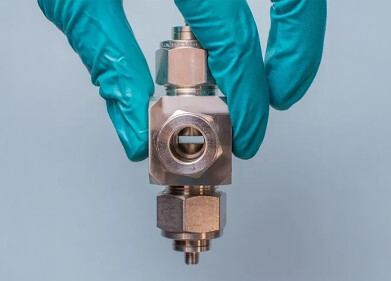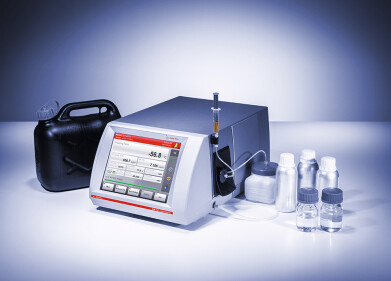Analytical Instrumentation
Diesel Fuels and Additives - Interference-free Determination of Total Sulfur with the patented MPO Technology
Oct 30 2017
The fast and trustable quantification of sulfur contents is an integral part of the process and quality control in refineries. The most reliable and flexible method to do this is the thermal decomposition with a subsequent UV-fluorescence detection of the formed SO2.
Independent of the sulfur content, the majority of samples can be analyzed with excellent results in shortest time. However, for some samples quantitative-deviating measurement results can occur depending on their composition (e.g. cetane improver such as amyl nitrate, 2-ethylhexyl nitrate etc.).This behavior is originated by the positive cross-sensitivity of UV-fluorescence detection to NO, which fluoresces in the same wavelength range as SO2, but with a significantly lower intensity. Depending on the nitrogen content present in the sample, the applied process parameters, and the used hardware, this can lead to more or less significant interferences. The effect ranges between 0.6 – 2.0 ppm “false” too high TS reading per 100 ppm Nitrogen content.
This is a serious problem, considering the fact that many fuels classified as sulfur-free already have an "actual" TS content close to the statutory limit value of 10 ppm. The sulfur content determined can exceed the specified threshold easily, if nitrogen-containing cetane improvers are used. Thus the fuel does no longer comply with the requirements; a costly "after treatment" is needed. However, this unnecessary effort can be avoided by using matrix-independent techniques like the patented MPO – Micro Plasm Optimization, an enhancement of the classic UV-fluorescence. In real-time interfering components are converted into harmless species, no additional auxiliary materials (e.g. catalysts), no extension of analysis time due to multiple injection, or matrix separation by trap-and-release approaches is required. Results are gained as fast as usual.
At PEFTEC (www.PEFTEC.com) in Antwerp, on November 29 – 30, 2017 Analytik Jena presents its most recent developments for high performance solutions in oil and petrochemical business during the conferences, poster presentation and at booth #32:
Oral presentations: PlasmaQuant® PQ 9000 - Optical Emission Spectroscopy
Wednesday, November 18, 2015 at 10:00 am to 10:30 am, Seminar Room 2:
„PlasmaQuant PQ 9000: Advances in the Analysis of Heavy Oils by High-Resolution ICP Optical Emission Spectrometry" multi EA® 5000 – Micro-Elemental Analysis (C, N, S, Cl): Wednesday, November 18, 2015 at 2:30 pm to 3:00 pm, Seminar Room 6: "multi EA 5000: Heavy fuel oil and other challenging matrices - Strategies for the Easy and Reliable determination of Sulfur in presence of N-compounds" Poster presentation: multi EA® 5000 - Micro-Elemental Analysis (C, N, S, Cl):
Presenter will be present at lunch break from 12:30 pm to 2:00 pm on both days
“Sulfur Trace Analysis - Reliable Determination in Presence of Interferences”
More information can be found at https://www.analytik-jena.de/en/analytical-instrumentation/products.html.
Digital Edition
PIN 25.5 Oct/Nov 2024
November 2024
Analytical Instrumentation - Picturing Viscosity – How Can a Viscometer or a Rheometer Benefit You? - Sustainable Grease Formulations: Evaluating Key Performance Parameters and Testing Method...
View all digital editions
Events
Nov 26 2024 Paris, France
Nov 26 2024 Amsterdam, Netherlands
Nov 27 2024 Istanbul, Turkey
Biogas Convention & Trade Fair 2024
Nov 27 2024 Hanover, Germany
Dec 03 2024 Dusseldorf, Germany



















